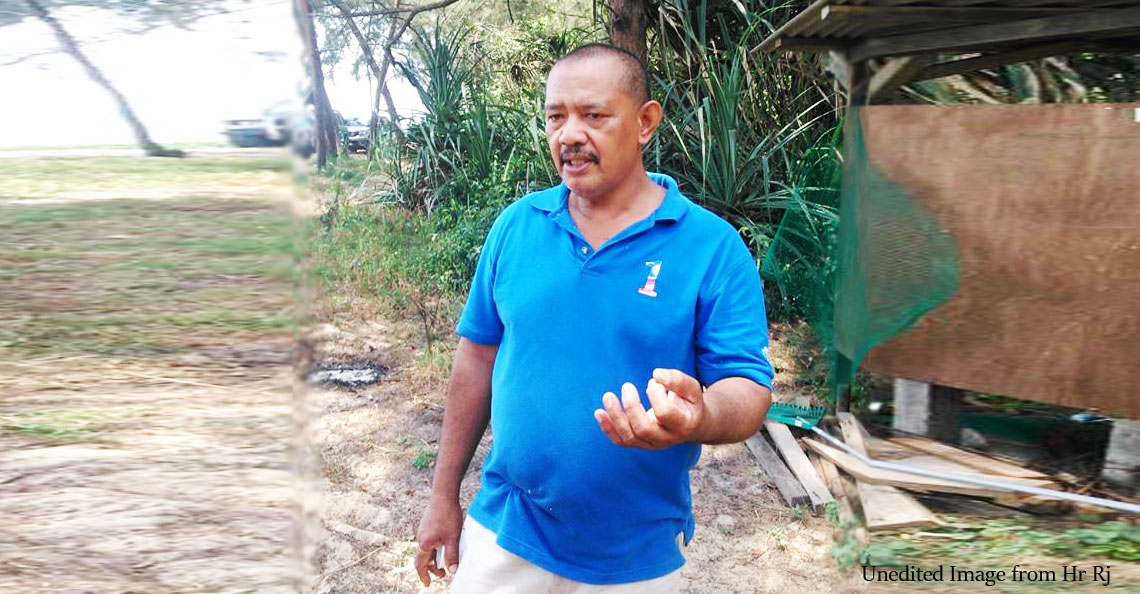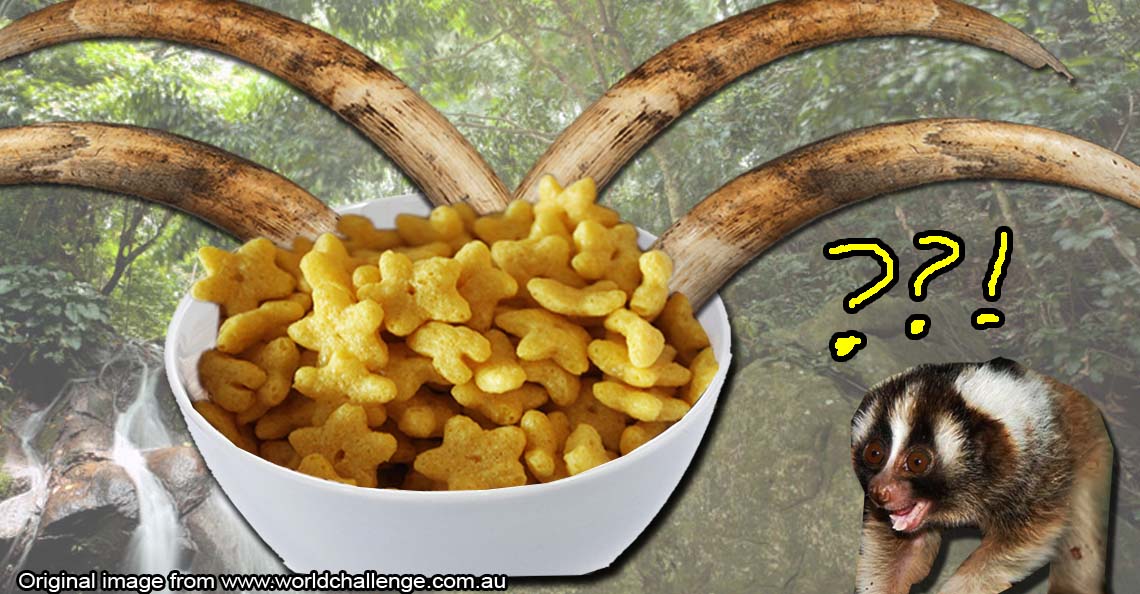Hundreds of people are saddened by this pak cik’s passing. What did he do?

- 1.5KShares
- Facebook1.5K
- Twitter3
- LinkedIn8
- Email4
- WhatsApp23
Pak Su Cherating, whose real name is Haji Ariffin Hassan, took his last breath on 11th of November 2018 on his way back from Korea.

Some people who have visited the Rimbun Dahan Turtle Hatchery (RDTH) in Pahang would be familiar with his name. He was the one running the hatchery with help from the Malaysian Nature Society (MNS) Pahang and the one websites like this and that would recommend you call if you wanted to visit the hatchery.
But little is known about the man himself. So we reached out to two of his close friends from MNS, Helen Bong and Maketab Mohamed, to learn about him and his experiences.

Here’s what they told us.
Before he started protecting the penyus, Pak Su used to serve the military… and cook
Born on the 21st of May 1959 in Negeri Sembilan, Pak Su was in the military before settling in Kuala Kemaman, where his wife Mak Su came from and eventually living in Geliga and Cherating. He used to run a small wooden roadside food stall called 619 Café, which Maketab said was at the entrance of Lagenda Resort, before he embarked on his life long mission.

Not to be mistaken with Sri Pelabuhan Pak Su Seafood Restaurant, which is owned by someone else. He and Mak Su used to sell roti canai and nasi lemak for breakfast and nasi lauk for lunch. The restaurant used to be his main source of income until they closed shop a year ago due to Mak Su’s health condition.
“The kedai now already rent to a fruits stall , just next to De Cherating Restaurant.” – Helen
But all was not lost. He went on to work at a fishing port and also provided transport to visitors in Cherating. Since he’s a nature lover, he used to share stories about our alam semulajadi with the tourists. Later on, he attained his eco guide license, which can only be taken from the Tourism Department (much like a city guide but for nature) and became a full-time eco guide.

Helen added that eco guides need to attend some classes held by the govt on stuff like birds, marine life and flora, which was why he could also tell us the names of different types of birds and trees among the many things he knew. But since he was the human encyclopedia of nature, why did he focus on turtle conservation je?
The turtle egg trade posed a threat to turtle nesting and cost over RM63,000!
Turtles are among the attractions on the East Coast. Pak Su noticed that many guests from all over the world come here to check out the turtles during the turtle laying season from late April to early October, but the turtle nesting trips were not turtle-friendly ironically.
“If everyone simply go to the beach to look for turtles, that is a threat for turtles, will get less and less turtles come to our beach for laying eggs. Then he started his turtle watching trip to guide the guests without disturbing the turtles while laying eggs.” – Helen

After he started his turtle watching services with his family’s support, he found out that the market in Kemaman still traded in turtle eggs as food. The thought of not having turtles around because of this turtle egg consumption really bugged him.

So he started thinking of what he could do to save the eggs. The next thing he knew, an opportunity came knocking on his door when Maketab introduced Pak Su to the Kasturi Resort owner Angela Hijjas, the wife of Malaysian architect Hijjas Kasturi.
“That was the reason why the first two sites of the hatchery were in the Kasturi Resort beach.” -Maketab
Angela, a nature lover herself, found that the Suria Beach in front of her resort was a nesting ground for turtles. And it’s from this beach where the eggs get stolen by some locals.

With the money she inherited from her mother who was also a nature lover, Angela worked with Pak Su to build RDTH in 2013, which became his favourite past time, and then moving it to Chendor Beach in March 2018. But susah to open a hatchery, you know..

In the first 2 years, there was a shortage of man power, according to Helen, who joined him at the end of the 2nd year. Then, in the 3rd year, money was tight. Maketab said that one of the challenges was getting the funds to buy the eggs from the traditional egg collectors as a way of rescuing the unborn turtles. Sometimes, Pak Su had no choice but to use his own money to buy the eggs, persevering through the years. Luckily, people were really baik hati towards him.
“MNS Pahang and myself assisted when needed –recruiting friends, relatives etc. The eggs collected by the traditional egg collectors if not purchased or rescued to be hatched, would be sold to turtle egg sellers in the Chukai market – to be eaten.” – Maketab

“So that year actually is turtle high landing season. A lot of people support us and we managed to save 25,278 turtle eggs, which cost us about Rm63k.” – Helen
There were other problems too like robbers, wild boars, ants, mice and monitor lizards. But a bigger problem was the difficulty in getting the permit from the Fisheries Department (DoF).
“We (Pak Su, myself and MNS Pahang) met with the director of DoF Pahang as well as the Exco for Agriculture from the State Assembly of Pahang, Datuk Seri Mohd Soffi, recently as to formally apply for the permit and collaborate with the authorities.” – Maketab
“We tried 3 times ady, they still pending. License we got, the land authorities said no issue when in the last meeting in October. Only permit from DoF still need to fight for it.” – Helen
Maketab explained that the authorities saw RDTH as a competitor to their Cherating Hatchery. But actually, RDTH complemented the Cherating Hatchery becoz RDTH only buys eggs from the “no man’s land” beaches from Suria beach to the Pahang-Terengganu border while Cherating Hatchery only collects eggs in the official sanctuary from Suria to Club Med Cherating.

The obstacles didn’t stop Pak Su and the gang from hosting their programmes tho
At the time of writing, Helen was busy preparing material for an environmental talk in the International Islamic University (UIA). She said that the talk was initially planned for Pak Su to speak at. But she had to replace him because he passed away. :'(
“If he was still here, tomorrow will be the 2nd talk in uni in his life. His 1st talk in uni was about a month ago in KDU.” – Helen
Usually, their 15-minute briefings, given to visitors before the hatch and release programmes, are held in a casual “santai style” manner, under a tree with their slippers on. In the briefings, Pak Su explained the essentials about turtles, the importance of turtles for our oceans and environmental issues affecting turtles, particularly water pollution. (To faham all these, you can check out articles by CILISOS and The Island Drum)

Several schools, unis and private companies have visited the hatchery as part of their CSR initiatives, which consisted of different activities such as beach cleaning, mangrove planting and turtle awareness programmes.
“Pak Su gave talks to students in local schools if invited or if they visited the hatchery. He did not charge any money for if the visitors were students but, for tourists he will charge accordingly.” – Maketab

Pak Su built small dorms (which can tumpang 10 people at a time) for the volunteers and interns to stay at, for which the material was given by NGOs and Ahli Dewan Undangan Negeri (ADUN). Yeah, the hatchery also took in interns from universities, particularly Universiti Malaysia Terengganu (UMT), which has a Marine Science faculty.
But now that Pak Su is not around anymore, what’s next for RDTH?
Pak Su’s legacy will live on as long as the hatchery is still up and running
When we asked Helen if Pak Su had any future plans, she said that his only wish was that DoF would give the hatchery the green light that he’s been waiting for so long. He didn’t have any huge plans other than continuing his turtle conservation and awareness mission.
“Let the world know how important turtles are in this world. He always said he doesn’t want the next generation, can only see the turtle in TV or specimen. Let them have a chance to see the real turtles.” – said Helen.
His children Farina and Fadhil will take over his duties, with help from MNS Pahang. Even if many of us have missed the chance to meet the legend himself, we (and the future generations) can still see many turtles up close thanks to the efforts of Pak Su and the people involved in conserving the turtle species and educating others about the turtles.

- 1.5KShares
- Facebook1.5K
- Twitter3
- LinkedIn8
- Email4
- WhatsApp23



